Abandoned History: Chrysler and the Colt, Captive Economical Import Time (Part I)

For over 20 years Chrysler offered various Mitsubishi offerings as rebadged captive import vehicles in the North American market. For a handful of years, a Colt at your Chrysler-Dodge-Plymouth-Jeep-Eagle-DeSoto-AMC dealer was the exact same one you’d buy at the Mitsubishi dealer across the street. Let’s take some time and sort out the badge swapping history of Colt.
In the 1960s Japan’s economy was on the upswing, and the demand for family passenger cars was exploding. A regional division of Mitsubishi, Central Japan Heavy-Industries, introduced its first car in 1960 and called it Mitsubishi 500. Two other regional branches of the same company, West Japan Heavy-Industries, and East Japan Heavy-Industries had automobile plans of their own in the works since the Fifties. All three were incorporated with Central Japan Heavy-Industries into Mitsubishi Motors Corporation on April 22, 1970. This new unified entity, MMC, would focus more directly on making cars and use the resources of all three divisions. In three years’ time, MMC was able to produce over 75,000 cars a year. MMC was headed by Tomio Kubo, an engineer from the company’s airplane division.
Kubo wanted passenger car sales expansion, and fast. Enter Chrysler. Kubo planned to gain market share for MMC by inking deals with larger car companies in other markets. Said companies had established dealership networks that could distribute Mitsubishi cars much more easily than if the company attempted to found its own dealership network. In 1971, corporate umbrella Mitsubishi Heavy Industries sold Chrysler 15 percent of its shares. Shortly thereafter the first Dodge Colt was introduced, and the long and complicated association between Chrysler and Mitsubishi began.
The first Colt was on sale by late 1970 as a 1971 model. Underneath, the Dodge Colt was a first-generation Mitsubishi Galant. Though it was Chrysler’s premier attempt at foisting a Mitsubishi in America, Colt made a big entrance. The new economy car was available with two doors as standard coupe or pillarless hardtop coupe, and with four doors as sedan and wagon. Worth noting, Canadian customers received the Colt as a Dodge and as the Plymouth Cricket, while it was exclusive to Dodge in the US. There was a Plymouth Cricket for the US market, but that was a rebadged Hillman Avenger from England, and was sold only from 1971 to 1973. Colts were advertised separately from other Dodge cars and excluded from the full-line brochure.
With an engine up front and driven wheels at the rear, all first-gen Colts used a 1.6-liter inline-four. Said engine was a long-term one at Mitsubishi, in use from 1970 to 1987 across its maker’s cars as well as Eagle, Hyundai, and Mazda. In its original eight-valve format, power ranged from 95 to 105 horses dependent on carburetor. Transmissions on offer were a three-speed automatic or more commonly selected four-speed manual. Colt had a unibody chassis, with a MacPherson suspension up front and a live axle at the rear.
The Colt was of course federalized for sale in the North American market and meant Chrysler didn’t have to develop its own economy car. That saved the company big money as the other Detroit makers spent their dollars on cars like the Ford Pinto and Chevy Vega. The Colt with its Japanese origins did double duty and competed with new Japanese compacts like the Toyota Corolla and Datsun 1200.
The first-ever Colt was a short-lived one, as by 1974 Mitsubishi had prepared a new version for most body styles. At the debut of the second generation, the Colt was still based on the first-gen platform, but coupes and sedans had all-new bodywork. The Colt wagon was less loved and used its original body with a new front clip. Compared to the quad eyes of the first Colt, second-generation examples had singular headlamps upfront with inset turn indicators. Overall, redesigned models were softer and rounder in appearance than their predecessors.
Base model Colts still used the same 1.6-liter engine as before, but spendy consumers who wanted more power opted for the 2.0-liter instead. The 2.0 made 96 horsepower in Colt application and was commonly used in Australian market Mitsubishis. The 2.0 was familiar in the Galant through 1987. The larger engine was initially reserved for Colts with an automatic transmission but was offered later as standard equipment on the manually-motivated GT coupe. For Colt’s second generation, the Borg-Warner transmission was swapped for a TorqueFlite from Chrysler if the Colt was equipped with the 2.0 engine. It should be noted in the early Seventies that horsepower figures varied by publication, were lower for Californian cars, and changed in 1972 when the switch was made from gross horsepower to net. Big bumpers arrived for 1975, as big battering rams covered in rubber replaced a much simpler chrome bumper with federally mandated rubber guards.
The second Colt lasted four model years just like the first, and for its final outing offered an optional five-speed manual. The aforementioned five-speed was standard on the sporty GT and well-equipped Carousel trims. The GT trim was the raciest Colt offering from 1973 onward and included racing stripes. GT was introduced only on Colt hardtop coupe and was supplemented by the more luxury-oriented Carousel in 1975. Carousels had more standard equipment, were softer, and were finished in a jaunty blue and white theme.
But a new transmission wasn’t the only change in 1977, as Mitsubishi debuted a new version of the 1.6-liter engine with Silent Shaft. The Silent Shaft engine was an optional extra on lower-priced models, but standard on GT and Carousel trims. The technology debuted on the Astron series of engines, first implemented on Mitsubishi’s home market models in 1975. Silent Shaft was the first-ever use of twin balance shafts in any modern engine. Mitsubishi purchased the original patents of engineer Frederick Lanchester and sought modernization to apply the old technology to its engines. Silent Shaft was a big deal, and Mitsubishi later licensed its technology for use by Porsche, Saab, and Fiat.
There were some adjustments in marketing for Colt in the Canadian market during its second generation. Cricket was available for 1974 and 1975 only, and all Crickets wore the grille of the old Dodge Colt wagon from the US. The Colt GT saw a light name transformation into the Cricket Formula S. After five years marketing the Cricket, Plymouth changed it back into a Colt.
1977 was a very full year for the Colt, as Mitsubishi began shipping over new third-generation Colts during the model year that were actually a different model to the ones that were currently on sale at Dodge dealers. Salesmen got to explain why one Colt was a different size, shape, and had a different engine to the others next to it. It would be the first product split for Colt, but certainly not the last. More on that in our next installment.
[Images: Chrysler]

Interested in lots of cars and their various historical contexts. Started writing articles for TTAC in late 2016, when my first posts were QOTDs. From there I started a few new series like Rare Rides, Buy/Drive/Burn, Abandoned History, and most recently Rare Rides Icons. Operating from a home base in Cincinnati, Ohio, a relative auto journalist dead zone. Many of my articles are prompted by something I'll see on social media that sparks my interest and causes me to research. Finding articles and information from the early days of the internet and beyond that covers the little details lost to time: trim packages, color and wheel choices, interior fabrics. Beyond those, I'm fascinated by automotive industry experiments, both failures and successes. Lately I've taken an interest in AI, and generating "what if" type images for car models long dead. Reincarnating a modern Toyota Paseo, Lincoln Mark IX, or Isuzu Trooper through a text prompt is fun. Fun to post them on Twitter too, and watch people overreact. To that end, the social media I use most is Twitter, @CoreyLewis86. I also contribute pieces for Forbes Wheels and Forbes Home.
More by Corey Lewis
Latest Car Reviews
Read moreLatest Product Reviews
Read moreRecent Comments
- Lorenzo If it's over 30 years old and over 80k miles, and not a classic, it's a parts car, worth no more than 20% of original price.
- Dusterdude No mileage noted on a 33 year old car means likely well north of 300k + miles , along with issues noted , should equate to an ask price of less than $3k
- Ajla IMO, something like this really should be naturally-aspirated.
- Kjhkjlhkjhkljh kljhjkhjklhkjh Unless they are solid state batteries you BAN THEM. I like EVs... but EVs like to burn ... for days
- Kjhkjlhkjhkljh kljhjkhjklhkjh uh .. it looks like a VW golf got the mumps



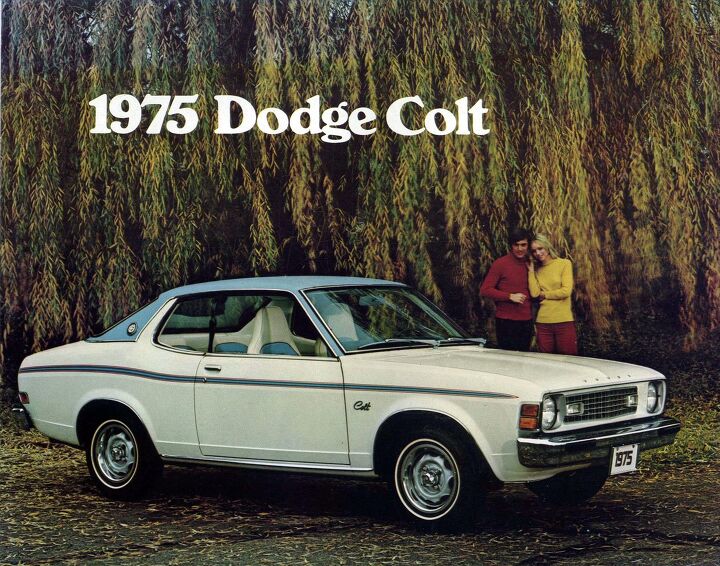






















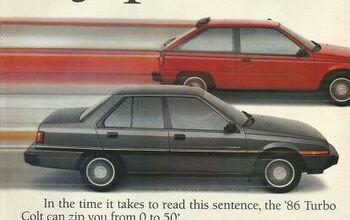
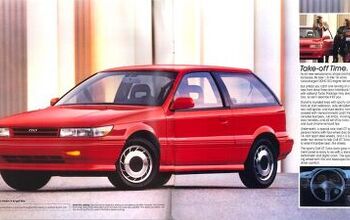
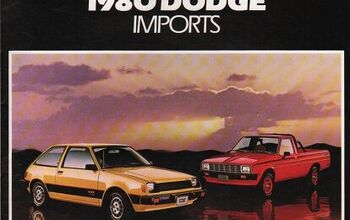
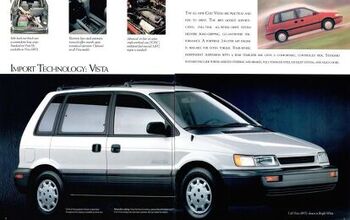
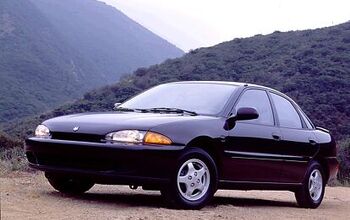










Comments
Join the conversation
I was going to buy one, but opted for a 71 Corolla cpe, with the 1.6 hemi engine.I really wanted the Celica and the Mk II.
I used to love the tart of the Carousel and other packages they put on these. Why don't they resurrect that for their crappy Mirage and Outlander? I would give my right nut to see one of those horrible things with a light blue vinyl top lol!